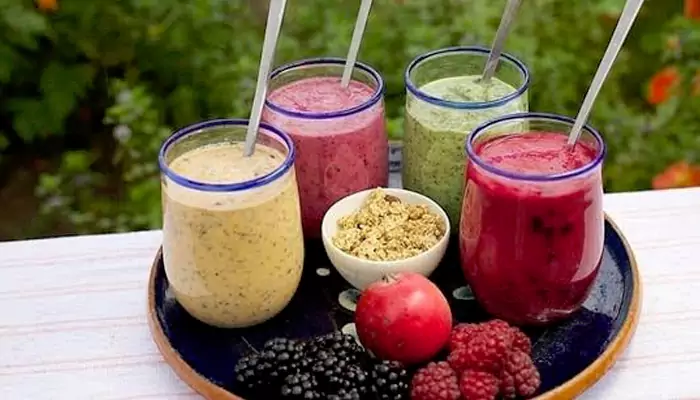Sabzi of the Day - Flavourful Wellness: Health Benefits of Mint and Easy Recipes for a Refreshing Twist
- Rohit Chatterjee
- 1 year ago
- 4 minutes read

A nutrition-dense herb, mint leaves, or pudina has therapeutic benefits
A treasure trove of health benefits, mint leaves or pudina are usually used in garnish dishes or are added in different types of drinks to provide a cooling sensation. Given they are rich in antioxidants, vitamins A and C, and essential minerals, pudina leaves are used to aid digestion, improve skin health, and boost immunity.
Rich in Calcium & Several Minerals
The nutritional value of pudina leaves is entirely on the higher side, especially because they contain zero sugar. As per the United States of Agricultural Research (USDA), per 100 grams of pudina leaves contain 243mg of calcium, 5.08mg of iron, 80mg of magnesium, 73mg of phosphorus, 569mg of potassium, 31mg of sodium, 1.11mg of zinc, 0.329mg of copper, 1.18 mg of magnesium and 0.082mg of thiamin.

Prevents Certain Health Conditions
While mint leaves are not known for curing or preventing diseases, they offer relief from certain health conditions.
Irritable bowel syndrome (IBS): A common digestive tract disorder, a person suffering from irritable bowel syndrome may have digestive symptoms such as stomach pain, gas, bloating, and changes in bowel habits. While mint alone cannot provide relief, the methanol in its mint leaves or oil extracted from mint relaxes muscles in the digestive tract and offers some amount of relief. Although a person suffering from IBS must consult with a doctor.
Is your gut trying to tell you something? At Dr.kalebi Labs, our Fecal Calprotectin test offers a quick, non-invasive way to detect bowel inflammation and screen for inflammatory bowel disease(IBD) and irritable bowel syndrome (IBS) that has a normal or low level. Prioritize your… pic.twitter.com/83ZLh6lS3F
— DKL Dr. Kalebi Labs (@DKLDrKalebiLabs) November 8, 2024
Credit- X/@DKLDrKalebiLabs
Relieve Indigestion: Mint leaves or even oil extract from the leaves may help reduce indigestion. If the leaves or oil extract is taken with food, it speeds up the passage of food through the stomach and reduces indigestion.
Could Help Diabetes Patients: Pudina leaves contain flavonoids and antioxidants that help control blood sugar levels and also increase insulin sensitivity, which is beneficial for diabetes patients.
Reduces Inflammation: The methanol in mint leaves is a natural analgesic, and therefore, it is used to lessen swelling and inflammation.
Pudina Recipes
Given pudina leaves’ methanol properties, it is pretty hard to incorporate pudina in various dishes. However, some Indian dishes are based around pudina, which one can prepare at home to enjoy the soothing taste and benefit from its nutritional value.
Pudina Chutney: Often paired with samosas and parathas, pudina chutney is common in Indian households and is made by blending fresh mint leaves, coriander, green chillies, ginger, lemon juice, and salt.
Pudina Paratha: Unlike paneer or potato (aloo) parathas, which are stuffed parathas, one can prepare pudina parathas by kneading wheat flour with mint leaves, chilli powder, and cumin. Once done, cook it in ghee and pair it with curd, pickles, or any curry of your choice.
Lasuni Pudina Parantha - A delicious multi-layered Indian paratha made from mint and few spices. #FoodFood pic.twitter.com/kYJIic7RnP
— FoodFood (@FoodFood) April 16, 2018
Credit- X/ @FoodFood
Pudina Rice: Similar to coriander rice or cumin rice, one can prepare cooked rice with pudina leaves. Boil any type of rice and strain the water after it’s cooked. In a pan, sauté mint leaves, green chillies, and ginger and add rice. Saute around 7-8 minutes on high blame to get a burnt flavour. Garnish the dish with roasted cashews.
Pudina Raita: Can’t beat the summer of India? Take a bowl of curd and add chopped mint leaves, grated cucumber, and roasted cumin powder. Add a bit of salt, and there you have it: a refreshing bowl of mint raita.
Despite being a tricky plant, pudina has several health benefits and packs nutritional value. Therefore, it is essential to incorporate it into our daily meals, be it in the form of raita or just by adding pudina leaves to drinking water to jazz it up.











